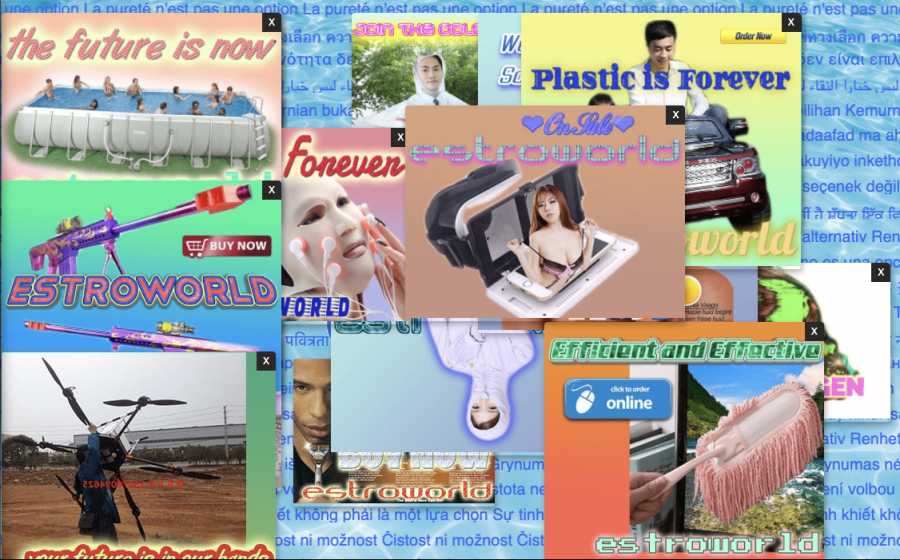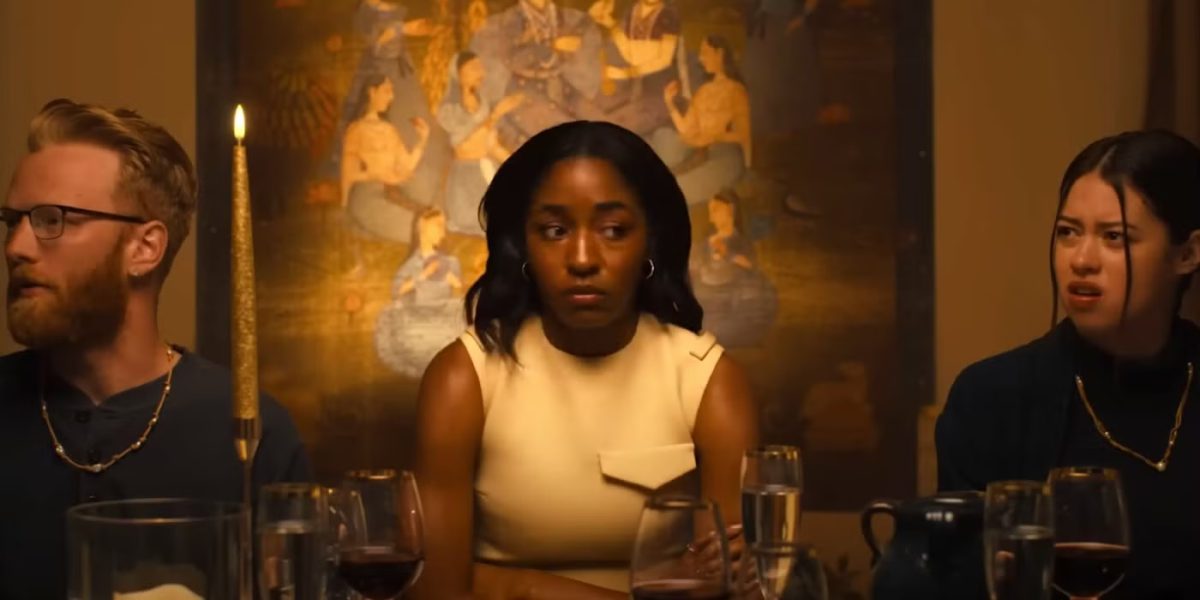‘Art’s Work in the Age of Biotechnology’ displays interaction of science and art
Mary Maggic, an artist who works with the intersection of biotechnology and art, is a Carnegie Mellon University alum. Their piece, titled “Estroworld,” is an interactive website that alludes to materialism and industrial toxicity.
April 2, 2021
Bombarded by flashing pop-ups and bright word art, viewers see a never-ending plethora of products from the Estroworld, which alludes to consumerist materialist culture.
Artist Mary Maggic has combined their interests in body and gender politics, biohacking and environmental activism to create “Estroworld,” an interactive website featured at the online exhibition of “Art’s Work in the Age of Biotechnology.” The exhibition features work from 10 artists around the world, emphasizing the roles that artists and scientists can play in shaping our genetic futures.
With programming scheduled through Wednesday, the organizers invite the Pitt community to explore not only the digital pieces, but also to interact with the artists behind them. Hannah Rogers, the exhibit’s curator and visiting scholar at Pitt, said the exhibit was meant to introduce a new way to think about biotechnology.
Biotechnology is any technology based on biology. Scientists use biotechnology in different contexts, such as genetically manipulating microorganisms to produce medicines and devices. While biotechnology has seemingly inevitable consequences — from exploitation of intellectual property to diminished biodiversity — Rogers said the exhibit approaches the term in a more open-minded manner.
“A lot of times when we think about what biotechnology is, we think of it in a determinist way — you know, this is what’s going to occur and you don’t really have a choice,” Rogers said. “There are digital things in this world that suggest to us that we’re all trapped inside. But that’s not really true.”
Rogers said that in the same way we can pick artwork we want to see in our everyday lives, we can also pick what science we want to interact with.
“[Biotechnologies are] available to individuals and to our society, but we can make choices about them,” Rogers said. “And so these [pieces] are works really aimed at suggesting to people what those possibilities are and some alternative pathways that maybe we could take if we don’t like how things are going.”
But Rogers encourages viewers to also critique the way that technologies are developing, who’s developing them and who has access to them. While looking for artists to feature, Rogers said she was seeking people who are already active in biotechnology and art.
“You need some significant background and time to understand life sciences before you should really be out there creating this kind of work,” Rogers said. “We’re not just interested in a representation of it that somebody who does digital work might be able to just make an audio or visual piece for us. We really wanted somebody who has engaged with questions to do with biotechnology and critiqued what’s possible.”
The Center for Genomic Gastronomy is a collaborative research hub that has played with the idea of cultures of food and biotechnology for the last decade. While it may not have physical headquarters, its piece in the exhibition, titled Cultures of Biotech, brings the Center to life.
Producer Emma Conley worked on the storyline and communicated with the programmer as to how their ideas should be displayed.
“It’s like building in this very imaginative way, where the building has this big terraced rooftop with lots of different food carts that we have actually made,” Conley said. “We thought we’re going to put them all together in one place where you could explore and eat at 15 different food carts that all tell different stories about the food system.”
The Center has been critiquing what’s possible for the last decade — when molecular gastronomy was trending as a new way of food preparation, the Center decided to form a collaborative research hub to flip molecular gastronomy on its head.
“Molecular gastronomy is all about bringing ingredients back down to their most basic levels, dealing with a lot of chemistry and building them back up to create new flavor textural experiences,” Conley said. “With genomic gastronomy, we wanted to kind of ask the opposite question — what does it look like to try to put an entire food system on a plate?”
Conley and her team study an organism’s genes and its environment and how those two relate to one another, looking at a whole food system, imagining how to put that on a plate and serve it as a dish.
Their piece, titled “Cultures of Biotech,” is designed from the perspective of a second person. Choosing between three characters, visitors walk into the Center and experience a digital dinner party. This mimics a real-life series that the Center hosts twice a year called “Planetary Sculpture Supper Club.”
“The promise is that as eaters, we select foods not just to eat but also to breed,” Conley said. “In turn, that kind of sculpts the planet. Each part of your placemat tells a bit about the story of each of the courses that you’re going to experience.”
Mary Maggic is another artist that works with the intersection of biotechnology and art. A Carnegie Mellon University alum, they were introduced to the world of bioart and biohacking by professor Rich Pell, who also runs the Center for PostNatural History at CMU.
In 2015, Maggic co-initiated “Open Source Estrogen,” a project that combined their interests in body and gender politics, environmental activism and biohacking. Maggic said their goal has always been to “open the ‘black box.’”
“With all of my work, there has always been a need to uncover or to excavate — opening the ‘black box’ as they say in the hacker communities,” Maggic said. “With hormones, it is the same — I am trying to understand how binary gender became codified by molecules, and how the same molecules, often intentionally hidden by capitalist interests, are altering those very same definitions of binary gender.”
Maggic said they saw the virtual exhibition as an opportunity to create a net art piece that they’ve wanted to make but didn’t necessarily have the coding skills to execute.
“Users are bombarded by a ton of flashing pop-ups that show products sold and represented in the Estroworld — an ominous and imperceptible hyperobject of industrial pollution that is our stark inescapable reality,” Maggic said. “The pop-ups feel simply inescapable, even when users move the pop-ups aside or try to close them, more appear within seconds.”
According to Maggic, the consistent stream of inescapable pop-ups is similar to the way no one — not even non-humans — can avoid exposure to the “residues of industrial capitalism.”



